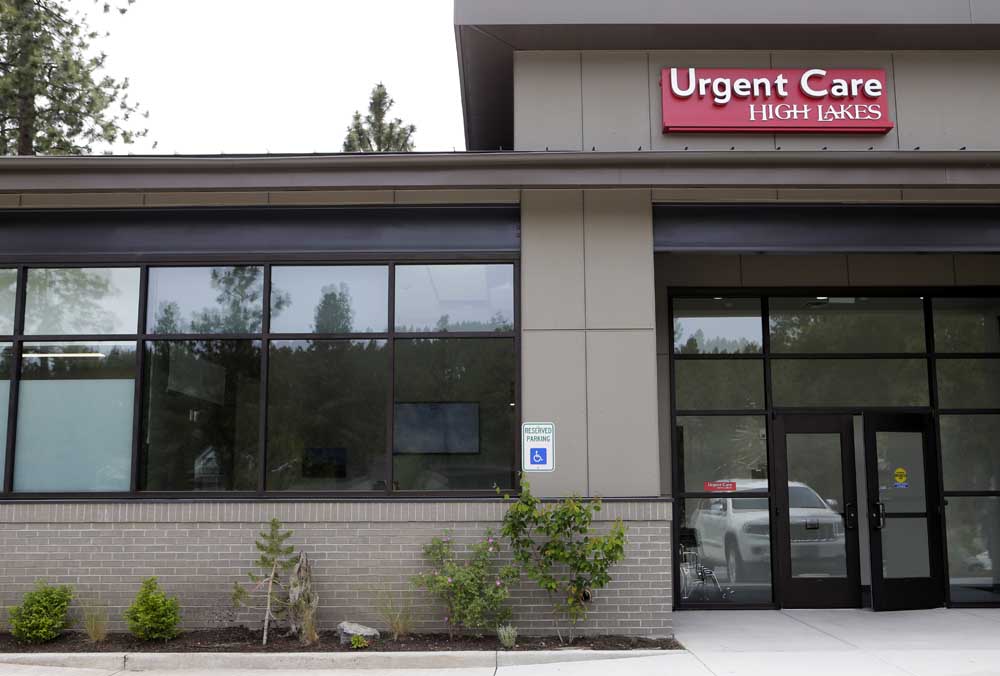Urgent care clinics have become a growth industry
Published 12:00 am Thursday, June 7, 2018

- High Lakes Urgent Care is one of two new recent urgent care clinics in Central Oregon, and it makes seven total in Bend.(Joe Kline/Bulletin photos)
Give it a few more years and urgent care clinics might just outnumber brewpubs in Central Oregon.
With the opening of new clinics by High Lakes Health Care in Bend and St. Charles Health System in La Pine last month, the region now boasts at least 11 urgent care clinics, including seven in Bend.
Trending
Such clinics have traditionally been opened as a response to emergency room overcrowding. But the rapid growth of walk-in clinics may be a response to another problem in the region: poor access to primary care.
Bend’s population has grown quickly in recent years, and more people have gained insurance coverage under the Affordable Care Act and Oregon’s Medicaid expansion. As a result, primary care doctors are being overwhelmed with demand.
“I see patients all the time that say they’ve moved here and they even have insurance, but they can’t find anybody to see them,” said Dr. Terri Mucha, owner of Family Choice Urgent Care in Bend. “We haven’t kept up with the growth.”
High Lakes opened its new urgent care center in the Shevlin Health & Wellness Center on Bend’s west side, in collaboration with The Center: Orthopedic & Neurosurgical Care & Research, which will provide digital imaging at its orthopedic clinic at the same site. Dan McCarthy, administrator of Adaugeo Healthcare, which owns High Lakes, said the urgent care clinic was opened primarily to give existing High Lakes patients better access to same-day services and after-hours care.
“We’re growing exponentially in primary care,” he said. “That’s just a reflection of Bend’s growth, so with that, it makes sense to have more options for a growing patient population.”
The clinic opened May 1 and so far has seen about an even split between current High Lakes patients and new customers who live nearby.
Trending
St. Charles Health System opened its first immediate care clinic in 2009 on the campus of its Bend hospital, as a way to keep less acute cases from clogging the ER. But John Weinsheim, president of the St. Charles Medical Group, which staffs the system’s hospitals and clinics, says newer immediate care clinics were opened in south Bend and in La Pine to bring options to underserved areas.
“In La Pine, that was something we noticed about traffic patterns,” he said. “Patients were coming from south county in La Pine, and we really have to provide that care closer to home.”
According to the Urgent Care Association of America, the number of urgent care centers nationwide has increased from about 6,400 centers in 2014 to 7,639 centers to in 2017. Surveys suggest patients like the convenience of the clinics, particularly to handle immediate health care needs that can’t wait a week or two for a doctor’s appointment. And as patients become increasingly frustrated sitting in physician waiting rooms, urgent care clinics offer a quick in-and-out service. Some 90 percent of urgent care clinics in one survey reported patient wait times of less than 30 minutes, and 84 percent said they can get patients out the door in under an hour.
High-deductible health plans have made many consumers more cost conscious, and urgent care clinics are routinely less expensive than emergency rooms and often, cheaper than a doctor’s office. FairHealth, a nonprofit that runs a national database of insurance claims, found that in 2016, the median charge for a 30-minute new patient visit cost $294 in a doctor’s office and $242 in an urgent care clinic. A New York Times/Blue Cross Blue Shield survey found treating a middle ear infection cost about $500 in the ER, compared with $100 in an urgent care clinic.
The clinics also make financial sense for health systems and large physician clinics.
“Because of the financial strain for medical practices right now, they’re looking for every reasonable source of revenue, and this is another source of revenue,” said Dr. Jim Stone, an emergency physician who owns Mountain Medical Immediate Care in Bend. “They’re losing revenues to other freestanding centers of medicine that they should be providing to their own patients.”
But it’s unclear how many urgent care clinics the region can support.
“I think there is an overabundance of urgent care for this population,” Stone said “That will settle out. Certain parties will figure out it’s not worth their time and effort, or financial investment — others will say, ‘we’ll keep it and expand it.’”
Mucha said before she opened FamilyCare a year and a half ago, wait times at other clinics were often two to three hours. “So Bend was missing a true urgent care in terms of convenience and in terms of speed,” she said. “I think there’s room for competitors right now.”
But many urgent clinics have branched out into other lines of care, such as occupational medicine or sports physicals, to help bring in patients.
“We have hours where we don’t have any people here,” Mucha said. “What I’ve noticed is the consumer still drives their car to the places where they’ve always driven it, even if they’re not the happiest there or that’s not the most convenient place.”
—Reporter: 541-633-2162, mhawryluk@bendbulletin.com








